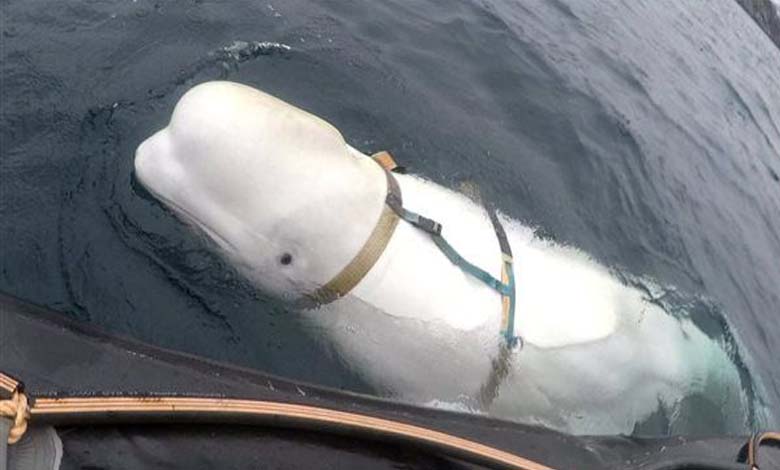The White Whale: “Russian Spy” or Recreational Therapist?

Its name sparks controversy, its location fuels speculation, and its harness ignites narratives ranging from “espionage” to “mysterious death.”
-
What do the colors of the Russian flag symbolize?
-
“The Russian Hell” shakes Ukraine… Learn about the “Doomsday” bomb
This is not a summary of a series available on streaming platforms, but a new chapter in the ongoing tensions between Russia and the West, centered around the story of a famous whale named “Hvaldimir.”
Recently, Norwegian authorities discovered a dead beluga whale near Russian territorial waters.
But the story doesn’t end there. Norwegian authorities have accused Moscow of using the whale for “espionage” purposes. The discovery of a harness around the whale’s body, carrying Russian equipment, has raised suspicions that it was a “spy whale,” while Russian media have downplayed these claims.
-
“The Deadly Lake”.. The Ghost of the Cold War Haunts a Russian Region
-
The Ukraine War drains Russian resources and affects its influence in the Mediterranean
Norwegian broadcaster NRK reported that a father and his son found the whale’s carcass floating in the Risavika fjord, in southern Norway, during a fishing trip.
The whale, whose name combines the Norwegian word for whale, “hval,” and Russian President Vladimir Putin’s name, was transported by crane to a nearby port for examination by experts.
According to marine biologists, the cause of the whale’s death has not yet been determined, especially since there were no external injuries on its body.
-
“Wagner” and Military Aircraft: What is the Reality of Russian Presence in Tunisia?
-
Targeting the Kremlin… Ukraine Fails in Its Counterattack on the Russian Capital
“Small Camera”
The whale, measuring 4.2 meters and weighing 1,225 kilograms, was first spotted in April 2019 by fishermen near Ingøya Island, close to Hammerfest in the Arctic.
At that time, the whale was wearing a harness that appeared to contain a small camera, with a label reading “St. Petersburg Equipment,” according to Norwegian media.
Hvaldimir was a regular visitor to Norwegian waters and actively sought human presence, spending much of its time around fish farms and having been struck by boat propellers during its approaches to humans.
-
What are the implications and goals of the Gulf-Russian summit?
-
Washington strengthens its presence in northern Syria to counter Russian influence
The “Marine Mind” organization reported that Hvaldimir was very interested in humans and responded to hand signals. Due to this behavior, Norwegian media also speculated that the whale might have been used as a “therapeutic whale” of some kind in Russia.
Hvaldimir’s presence was well known in Norwegian waters, and non-profit maritime organizations used its story to promote marine conservation.
One of Hvaldimir’s followers, who tracked the whale for three years on behalf of a Norwegian non-profit organization, expressed deep sorrow over its death, saying: “It’s extremely shocking. It seemed to be in good health until Friday, so we need to find out what happened.”
-
Ukraine Attacks Occupied Melitopol, Russian Side Says Two Killed
-
Ukrainian village bombed… Russian separatists and Kyiv blame each other for cease-fire violations
In contrast, Russian authorities have not yet issued an official response to the accusations regarding the whale, but Russian media have downplayed these claims, suggesting that the whale might have escaped from a training or treatment center in Russia.
Russian media have suggested that such animals might be used for non-military purposes, such as recreational therapy or scientific research.












